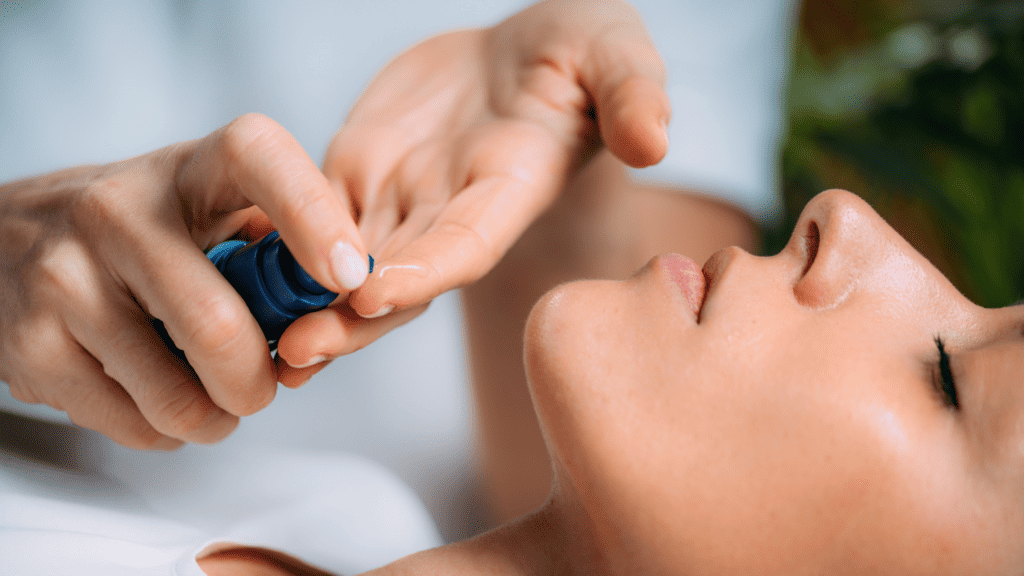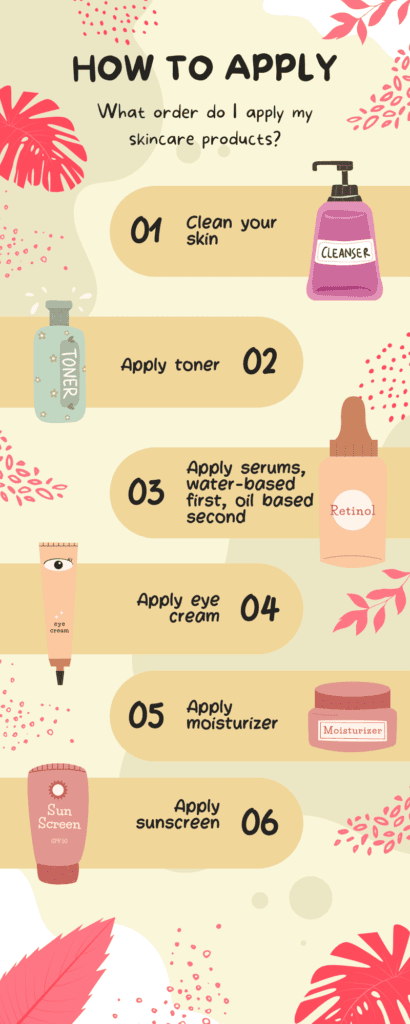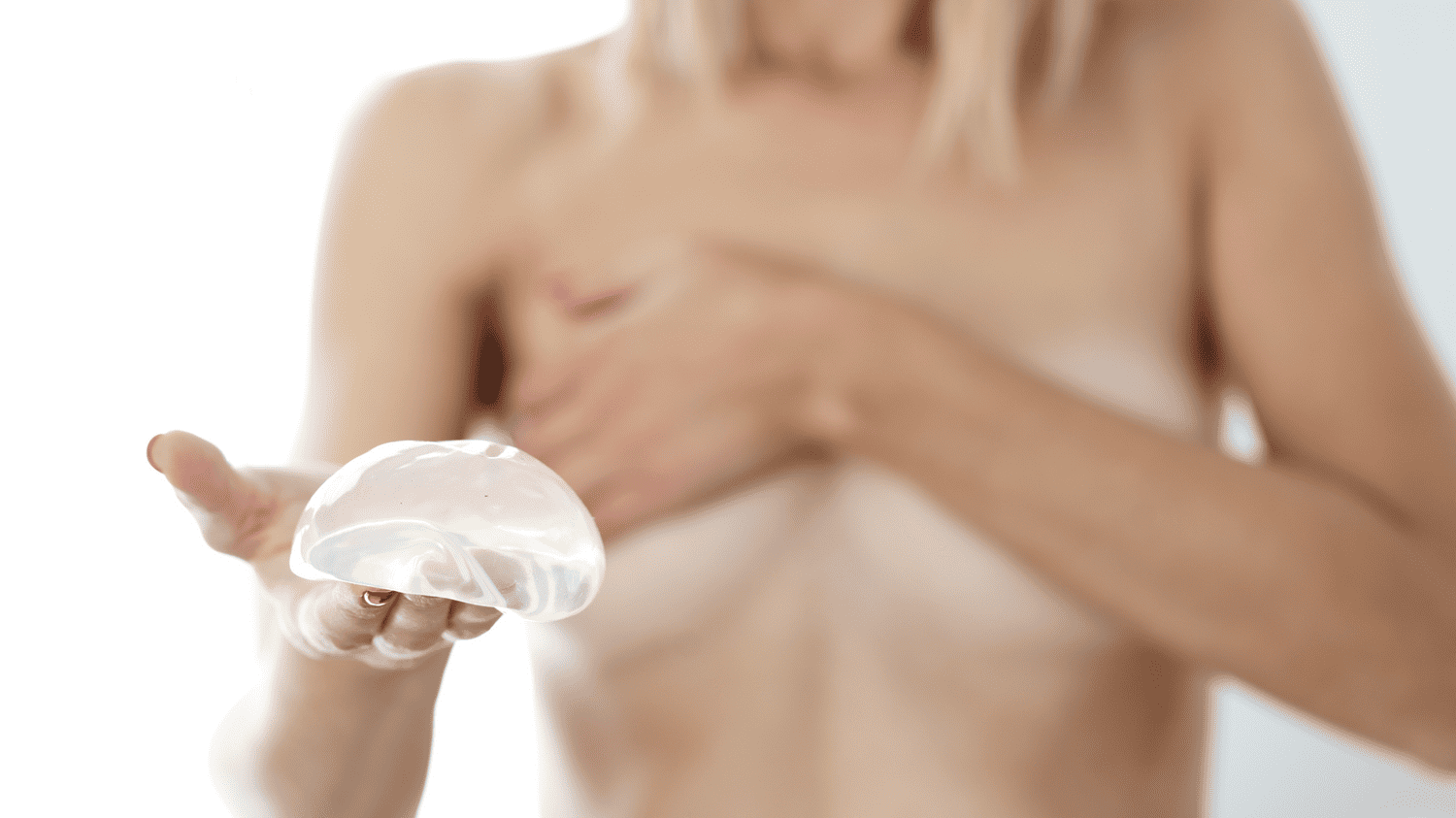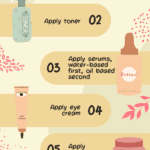How to use Retinol in your Skincare Routine
Last updated on May 14th, 2023 at 12:30 pm
This post contains affiliate links. This means I may make a small amount of money if you choose to purchase products mentioned in this page.

Hey gorgeous! Are you over 50 and looking for a skincare game changer? Look no further than retinol, your new best friend!
As we age, our skin naturally loses elasticity, hydration, and collagen. That’s where retinol steps in to save the day. It’s a powerful skincare ingredient that combats these issues
Retinol is a derivative of vitamin A. It’s famous for its ability to reduce fine lines, wrinkles, and improve skin texture. Plus, it’s great for promoting a more even skin tone.
Getting started with how to use retinol
It’s never too late to start! In fact, it becomes even more important as we age. But before you dive in, let’s discuss some key tips.

- Choose the Right Product:
With so many options, it can feel overwhelming. Look for a product with 0.5% to 1% retinol to start. As your skin adjusts, you can gradually increase the concentration.
- Start Slow:
Remember the mantra: slow and steady wins the race. Begin by applying once or twice a week. As your skin gets used to it, you can gradually increase the frequency.
- Be Patient:
Rome wasn’t built in a day, and neither is perfect skin. It takes time to see results, so be patient. Most people notice improvement within 3-6 months.
- Moisturize:
Retinol can be drying, so moisturizing is a must. Choose a rich, hydrating cream to apply after it.
- Sun Protection:
Retinol can make your skin more sensitive to the sun. Always wear sunscreen with at least SPF 30 during the day.
- Combine with Other Ingredients:
To maximize the benefits, pair it with other potent ingredients. Keep reading for our top suggestions!
Retinol Ingredient Pairings
Hyaluronic acid is a hydration superstar. It’s great for plumping and moisturizing the skin. Pairing it with retinol is a match made in skincare heaven. Apply hyaluronic acid first.
Vitamin C is an antioxidant powerhouse. It brightens, protects, and helps with collagen production. Combining retinol and vitamin C can lead to incredible results. t’s best to use vitamin C in the morning and retinol at night. If you do use them at the same time, apply vitamin C first because it is water-soluble and has a lower pH than retinol, allowing it to absorb fully into the skin for 30 minutes.
Peptides are short chains of amino acids. They help with collagen production and skin repair. Adding peptides to your retinol routine can improve overall skin health. Use retinol before the peptide product.
Niacinamide, a form of vitamin B3, is great for soothing redness and inflammation. It also helps with oil production and minimizes pores. Together with retinol, it’s a winning combo. Niacinamide and retinol can be combined in one product. If you’re using separate products, apply niacinamide first.
- Ceramides:
Ceramides are lipids that help maintain the skin’s moisture barrier. They’re perfect for counteracting any dryness caused by retinol. This dynamic duo will leave your skin glowing.
Common Concerns
- Irritation: At first, retinol may cause some redness, flaking, or dryness. Don’t panic! It’s a sign your skin is adjusting. Just reduce the frequency and moisturize.
- Sensitive Skin: If you have sensitive skin, consider using an alternative like bakuchiol. It provides similar benefits without the irritation.
- Dark Spots: Retinol can help fade dark spots over time. However, for more immediate results, combine it with ingredients like alpha arbutin. This powerful mix will work wonders on those pesky spots.
- Acne: Retinol can help with acne, too! It unclogs pores and reduces inflammation. Just be patient – it may take a few months to see results.
Rosacea: For those with rosacea, retinol may not be the best option. Consult a dermatologist before using it.
Additional tips for how to use retinol
- Get a Prescription-Strength Boost: Some people opt for prescription-strength retinoids, like tretinoin or Retin-A. Talk to a dermatologist to see if this is the right choice for you.
- Don’t Mix with Other Exfoliants: Avoid using retinol with other exfoliants, like AHA or BHA. This can lead to over-exfoliation and irritation. Keep it simple and let retinol work its magic.
- Use a Gentler Cleanser: Switch to a gentle cleanser. This helps minimize irritation and keeps your skin’s moisture barrier intact.
- Prime Time: Apply at night. Your skin repairs itself while you sleep, making it the perfect time for retinol to work its wonders.
- Listen to Your Skin: Every person’s skin is different. Pay attention to your skin’s reactions and adjust your routine accordingly. Remember, consistency is key!
Retinol is an incredible skincare ally for those 50 and beyond. By following these tips and guidelines, you’ll be well on your way to smoother, more radiant skin. Embrace retinol and shine on, you beautiful gem!









